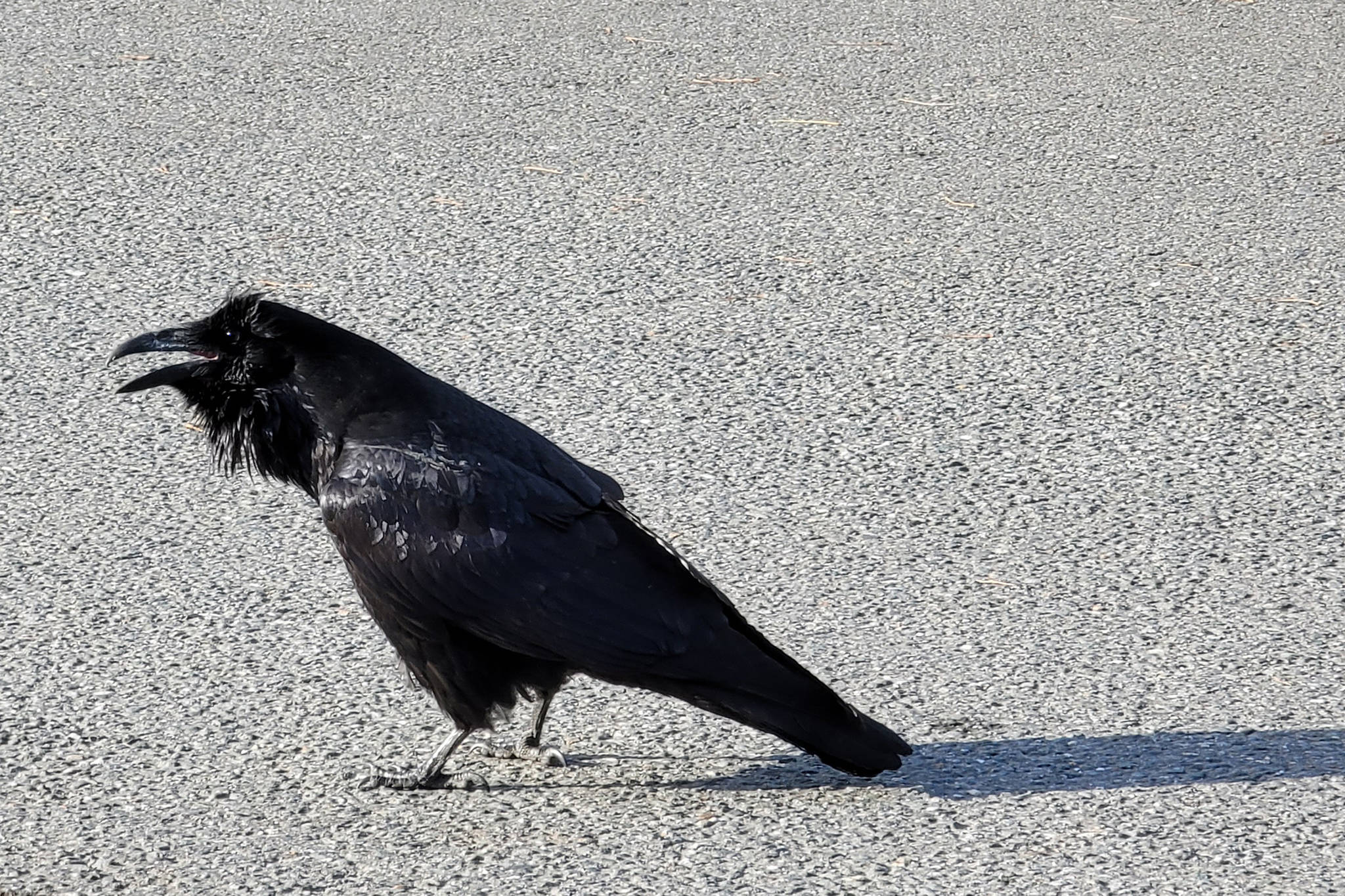By Mary F. Willson
For the Juneau Empire
One day in early November, after a morning of plonking about on snowshoes for the first time this year, I sat myself on a snowbank and leaned against an old alder tree — time out for a snack. My companion perched at the base of another alder a few feet away. We’d spent the morning looking at animal tracks in a meadow. As soon as we opened our packs to dig out our lunches, we were visited by a raven, who called and attracted another one. But they ignored our (admittedly) small offerings and departed.
Thinking about the raven calls reminded me of some recent reading about the singing behavior of birds and a lingering question. First, some background: ravens, crows and jays are classified as songbirds on the basis of both morphology and genetics. But their singing behavior differs from that of other songbirds in an interesting way.
Most songbirds sing during the nesting season, sometimes all day long, sometimes mostly in the morning. Males may use one song before dawn and another after sunrise, and there is usually a dawn chorus of many species all vocalizing at once. Morning bird songs are something that lots of folks, not just birders, look forward to in temperate-zone springtime and even sometimes in the tropics.
[Wild Shots: See reader-submitted photos of Mother Nature in Alaska]
Bird song has many functions. Males advertise their territory ownership, telling others of that species to stay away. Sometimes, two males face each other aggressively at a territory border and have song duels, each one trying to out-shout the other. Males’ songs also attract females to their territories, the vigor of their songs indicating their state of health and motivation. Female songbirds may sing too—telling other females to stay away from that territory. Or, in some cases, a female might sing to tell her mate to bring her a snack.
The “voice box” of birds is totally different from that of humans, other mammals and reptiles. We have a cartilaginous larynx at the upper end of the trachea (windpipe). The larynx is thought to have evolved from a valve involved in swallowing (and when we swallow, the larynx moves). We sing or talk by moving air out of the trachea and through the larynx, causing vocal membranes to vibrate; muscles linked to the cartilages control the sound. The closest living relatives of birds are crocodiles and they too use a larynx for vocalization. However, although birds have a larynx, it’s not used for making sounds; they use another structure, called a syrinx. The avian syrinx is located at the lower end of the trachea where it branches into two passage-ways (bronchii) going to the lungs. The syrinx apparently evolved, not from a valve, but from structural supports for the branching airway, and very different muscles are involved in control of its vibrating membranes.
Because the syrinx is in two parts, at the beginnings of the two bronchii, songbirds can sing two distinct notes at the same time, something a larynx cannot do. This is not the same as Mongolian throat singing, in which singers learn to exploit the harmonics (overtones) of the fundamental note. The two distinct notes sung by a songbird are not harmonically related. Air is moved from the lungs into the trachea, as most song is produced by exhaling; but birds can also produce some song when they inhale. Loudness and pitch are changed by altering air pressure and by changing the tension of the muscles that control the elastic, vibrating membranes of the syrinx.
[Sustainable Alaska: Supporting the next generation of scientists is part of a sustainable future]
Jays, crows and ravens have the avian syrinx, but they don’t use it in the same way as other songbirds.
They can make a huge variety of sounds; the loud, raucous ones are most familiar to us. But they are perfectly capable of making musical sounds and do so, quietly, upon occasion. If you listen carefully, you might hear them! But these songbirds have no dawn choruses, no song-battles for territory, no lovely singing to attract mates.
That begs the question: Why not?
• Mary F. Willson is a retired professor of ecology.“On The Trails” is a weekly column that appears in the Juneau Empire every Wednesday.

